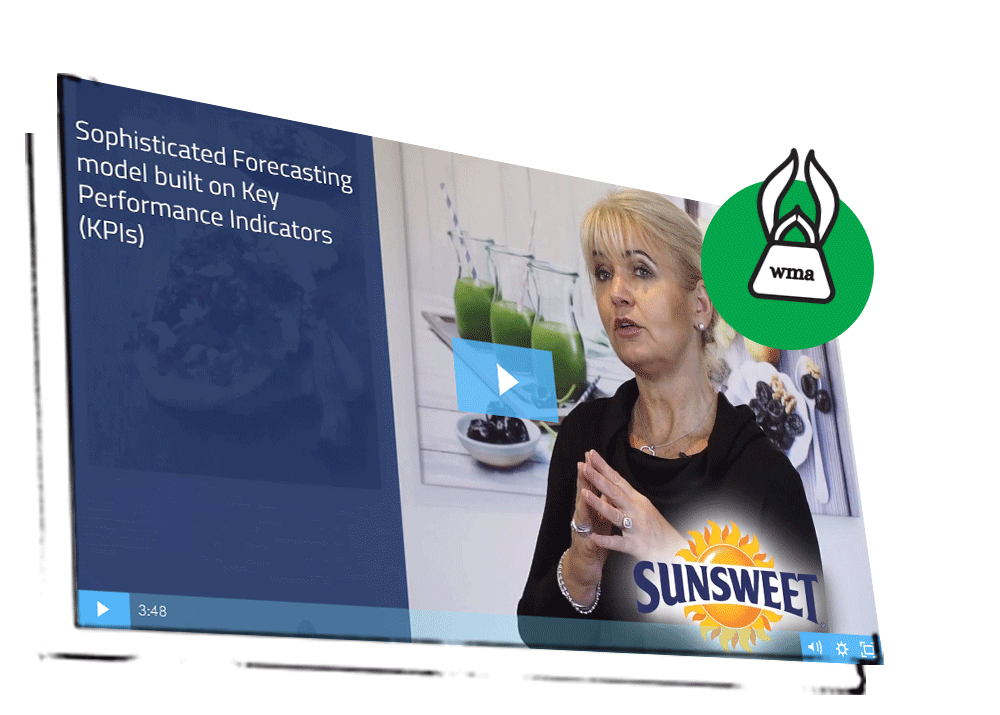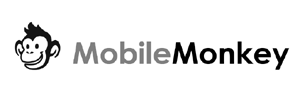- HOME
- ABOUT US
- SERVICES
- CUSTOMER STORIES
- OUR EXPERTS
- CONTACT US
- BLOG
In need of some sound digital marketing advice?
Book a free consultation with one of our experts.

Making a difference in our clients’ lives
We positively impact the lives of our clients beyond their KPI reports.
Solving digital marketing problems for over 100,000 businesses worldwide
What marketing problem are you trying to solve?
TALK TO US. WE CAN HELP!
Learn how we've helped businesses like yours for over two decades.
WSI Digital Marketing Services
Solutions to your specific marketing problems
We don't believe in the "one-size-fits-all" approach to digital marketing. Instead, we take the time to understand your organization and customers so we can recommend a strategy based on your individual business needs. When you invest in any of WSI’s digital marketing solutions, you’ll have some of the top minds in the industry contributing to your goals and vision.
Solving digital marketing problems for over 100,000 businesses worldwide
What marketing problem are you trying to solve?
TALK TO US. WE CAN HELP!
Learn how we help businesses like yours
WSI Digital Marketing Services
Solutions to your specific marketing problems
We don't believe in the "one-size-fits-all" approach to digital marketing. Instead, we take the time to understand your organization and customers so we can recommend a strategy based on your individual business needs. When you invest in any of WSI’s digital marketing solutions, you’ll have some of the top minds in the industry contributing to your goals and vision.
You have a vision. We can help make it happen.
You have a vision. We can help make it happen.
We are the World’s Largest and Most Experienced Digital Marketing Agency Network




Up to 74% Increase in Organic Traffic and Inquiries
Mike Chavez Painting is a local business that was looking to improve their website design to better showcase their work and enhance their good reputation. Since partnering with WSI, they have launched a competitive SEO strategy and content marketing campaign to dramatically increase the number of targeted visitors to their newly designed website. Inquiries coming from their website continue to grow year over year and they have even been voted the best paint company in the Sonoma Country for 2017 and 2018.
In less than 3 minutes, watch what we did for Mike Chavez Painting and how we could do the same for you.

Increased Online Bookings by More Than 100%
Due to an unoptimized and poorly maintained digital presence, Clínica da Mama was losing potential customers to less qualified breast clinics in the area. Partnering with WSI enabled them to "go digital" with their customer acquisition activities. Through targeted PPC and SEO campaigns, Clínica da Mama’s exam bookings increased by over 100% and consultations rose by 58%, results which generated a significant revenue boost for the company and allowed them to recoup costs they had invested in expensive medical equipment.
Download your copy of Clinica da Mama's case study and learn how we can deliver you similar results.

Generated Over 136 Million Brand Impressions
Sunsweet is a brand recognized around the globe, yet they were struggling with brand consistency across their European markets. Partnering with WSI enabled them to skillfully overhaul their digital presence, bring unity across their website and social media campaigns, and exponentially increase their brand reach and generate conversion rates well beyond industry benchmarks. In fact, WSI’s work with Sunsweet earned them a WMA WebAward for the Food Industry Standard of Excellence category.
In less than 4 minutes, watch what we did for Sunsweet and how we could do the same for you.
Insights from our global Digital Marketing Network applied to your local business
With offices across the world and more than two decades of digital marketing experience, your WSI Consultant brings deep expertise and insights directly to your marketing strategy.
Leveraging Global Expertise
Our consultants can tap into the collective brainpower of the WSI network. With offices across the world, we’re on the global pulse of digital marketing.
GET GLOBAL INSIGHTS
Delivering Local Results
We may be an international company, but our digital strategies are designed with your local market in mind. It’s your strategy, for your market and local clientele.
GET LOCAL RESULTS
Learn From Our Experts
Digital marketing tips, tricks, and best practices you can put into action.

By WSI Team
•
05 Apr, 2024
The rise of artificial intelligence (AI) has changed hundreds of industries—and digital marketing is no exception to this trend. For businesses looking to grow their online presence, attract more customers, and grow their bottom line, leveraging AI for ideation and content creation has become an increasingly relevant tool. But before diving into the deep end of AI, it's a good idea to take a minute and examine the crucial steps to consider before incorporating AI into your content strategy. In this blog, we'll look at what you need to consider before jumping into AI, emphasizing the benefits and challenges of material produced by AI and whether it's the best option for your organization. The Benefits of AI Content Increased Effectiveness The capacity of AI-generated content to expedite content development processes is one of the most compelling arguments in favor of its use. Various content generation processes, like writing product descriptions and enhancing existing content, can be automated using AI-driven tools and platforms. This automation significantly reduces the time and resources needed for content generation. Imagine being able to create hundreds of words of content in only a fraction of the time that a human writer would require. AI can assist businesses in producing content consistently, ensuring that their audience remains interested and knowledgeable, and giving human writers more time to develop and create more complex branded content. Continuity, Brand Messaging, and Output Maintaining continuity in brand messaging is paramount. It's not just about what you say but how you say it that defines your brand's identity. Whether you're a small startup or a multinational corporation, AI-generated content can be a game-changer when it comes to ensuring a consistent brand voice across all your communication channels. Every piece of content you publish reflects your brand's personality. And in today's hyper-connected world, consumers expect nothing less than a seamless experience across all touchpoints. This is where AI steps in, acting as a reliable guardian of your brand messaging. AI-powered content creation tools can be programmed to adhere to your brand's unique tone, style, and values. They can analyze your existing content to learn your brand's distinct voice and then generate content that aligns perfectly with it. This ensures that your brand remains instantly recognizable, no matter where your audience encounters it, and frees up your marketing team to work on strategy and more complex and tailored brand messaging. Consistency in brand messaging isn't just about aesthetics; it's about building trust . When your audience encounters a consistent tone and message from your brand across various platforms, they're more likely to perceive your business as reliable and trustworthy. This builds a strong foundation of trust that can lead to increased customer loyalty and advocacy. Data-Driven Perspectives AI is not just good at creating content; it's also excellent at analyzing data and improving existing content . AI-driven solutions can examine website traffic patterns, conversion rates, and user engagement and provide strategic insights that you can then use to direct your content strategy and assist your marketing team in creating material that appeals to your target market. You can improve your content marketing strategy, optimize your material for search engines , and produce content that aligns with your audience's tastes by utilizing AI-generated insights. The Potential Problems with AI Content While, in our opinion, the benefits of AI in business far outweigh the disadvantages, we can't ignore that this is a rapidly evolving space, with legislation and ethical concerns that are just catching up to the technology. And to make a fully informed decision, it's essential to be aware of the difficulties that AI can present: Genuineness and Originality The impression that AI-generated content lacks that human spark that makes content engaging and interesting is a widespread worry. Replicating human writers' creativity, emotion, and storytelling with artificial intelligence can be difficult. Finding the ideal mix between AI assistance and human ingenuity is crucial: AI should assist human creativity, not replace it. That's why AI can't replace the human component. Businesses still need to evaluate and adjust their AI-generated content to make sure it incorporates their distinctive personality and tone . You can produce exciting and authentic content that captures your audience's attention by fusing human creativity and AI efficiency. Brand Identity and Voice For authentic brand messaging, having a consistent brand voice is essential. Even though AI-powered tools can guarantee consistency and grammatical correctness, it's critical to oversee and edit any AI-generated content so that it conforms to your brand's voice. This is still only something that can be done by human brand managers, working hand-in-hand with their AI assistants. Ethics-Related Matters AI-generated material also brings up some new ethical dilemmas because, according to some individuals, AI content blurs the distinction between "real" human and automated interactions. Transparency and disclosure in creating AI material are both crucial to addressing potential ethical quandary. Informing your audience when content was produced using AI can help you maintain the honesty and integrity of your digital marketing campaigns. Industry Adoption of AI Content Many industries have effectively adopted AI-powered tools to help them improve their digital marketing efforts, including the following: Online Shopping and Product Details AI is frequently used in the eCommerce industry to create product descriptions, enhance customer experience, and boost sales. AI can produce accurate and thorough product descriptions, assisting customers in making knowledgeable choices. Journalism and the News In particular, AI is automating the creation of many news stories for data-driven reports and financial news. While AI can provide information swiftly, ensuring credibility and accuracy remains crucial. In this sector, human oversight remains vital. SEO and Content Marketing Businesses can now optimize their content for search engines using AI-powered content marketing solutions. AI can look at things like keywords, trends, and user behavior to create recommendations to help improve content strategies. Artificial intelligence-driven SEO solutions offer suggestions for enhancing website visibility and ranking. How to Select AI Content It's critical to choose the appropriate settings for utilizing AI-generated content. Think about AI when you need to achieve the following: Swiftly produce a large amount of content. Ensure that your brand's messaging stays constant. Improve your content strategy and analyze statistics. Content must be optimized for user engagement and SEO. It's crucial to strike a balance between AI and human innovation. A human touch remains necessary for certain types of content, such as thought leadership essays or narratives. Platforms and Tools for AI Content Many platforms and technologies driven by AI assist organizations with content creation, data analysis, and optimization. When choosing the best AI platform for your company, consider aspects like usability, scalability, and integration potential. Spend time learning about the features and capabilities of AI content tools to get the most out of them. Many platforms provide training and support to assist consumers in utilizing AI to its fullest potential. Future Content for AI AI will play a more significant part in content production in the upcoming years. Among the new trends are: Enhanced understanding and processing of natural language. Higher-level content personalization. Improved AI-powered content marketing techniques. Businesses should keep up with the most recent breakthroughs in AI as it develops to stay competitive in digital marketing. AI content's efficiency, consistency, and data-driven insights have made it a significant asset in digital marketing. Even though AI offers many benefits, organizations must deal with issues like ethics, brand identity, and authenticity. It's crucial to choose the appropriate settings, strike a balance with human ingenuity, and prioritize transparency when thinking about AI content. Businesses may leverage AI's capacity to strengthen digital marketing initiatives and maintain competitiveness in the ever-changing digital marketplace with the correct platforms and tools.

By WSI Team
•
05 Apr, 2024
Is your company still hesitant to embrace the power of artificial intelligence (AI)? Well, it's time to stop waiting and start reaping the benefits! Numerous organizations have already harnessed the potential of AI in their business operations and here's why: It's ability to analyze vast quantities of data and translate that into relevant insights that can be used when evaluating options and/or personalizing solutions for clients' specific needs. 24/7 availability and immediate responsiveness that boost customer service. Automating repetitive tasks to make processes more effective and free up employees for tasks requiring a human touch. AI technologies create opportunities for increased decision-making power, streamlined procedures, and productivity. It's no surprise then that stats reveal that over 80% of businesses have incorporated AI in some way. This makes an AI Policy essential in your business. And that's why WSI has created an AI Principles Template that you can download for free . By incorporating a set of well-thought-out principles, organizations can manage AI-related risks while maximizing its benefits. Our AI Principles Template provides a framework for businesses looking to infuse ethical and responsible practices in their AI strategy. AI Principles Template: Encouraging Conscientious AI Approaches Developing and implementing AI ethically calls for a calculated strategy. The AI Principles Template from WSI provides a framework for guidance that can be customized for companies of any size or industry. This template encourages moral and responsible AI practices by aligning with your company's beliefs and objectives. Benefits of Having AI Principles: 1. Increased Transparency Transparency is vital in building understanding and instilling confidence in your company's AI initiatives. It is crucial to encourage open communication about your AI strategies, and WSI's template provides the perfect framework to ensure that all relevant parties are well-informed about your approach. By incorporating transparency into your AI policy, you not only establish credibility but also demonstrate your commitment to ethical AI practices. Transparency in AI allows you to build trust with stakeholders, including employees, customers, and partners. When these parties have a clear understanding of how AI is being utilized within your organization, they can feel more confident in the decision-making processes and outcomes. This transparency fosters a sense of trust and accountability, making it easier to navigate any potential challenges or concerns that may arise. 2. Better Teamwork Collaboration between many teams and departments is not only necessary but also crucial when it comes to developing and implementing AI in your business. The WSI template understands the importance of cooperation and teamwork and encourages organizations to take an inclusive stance on AI. Adopting AI in your business operations can unlock its full potential and make it more effective by ensuring that your AI principles promote collaboration among different teams and departments. This is because AI implementation often requires expertise from various areas, such as data science, IT, marketing, and customer service. By fostering a collaborative environment, you can harness the collective knowledge and skills of your employees, leading to more innovative and successful AI initiatives. 3. Risk Management Artificial Intelligence presents businesses with new risks and problems that they must manage. Businesses can effectively prepare and handle AI-related difficulties by using WSI's AI Principles Template and making their own positions on AI clear to the world. Organizations may reduce potential adverse effects and provide the groundwork for long-term AI plans by proactively managing risks. 4. Reputation A key component of any successful business is trust. Trust from their clients, trust from their partners, trust from their employees. By assisting companies in adopting ethical AI practices, WSI's AI Principles Template helps improve brand reputation and build trust in the corporate culture. More clear directions and stronger relationships follow when stakeholders, clients, and customers believe your AI initiatives prioritize ethical issues, enhancing your brand's reputation. Real-World Examples of AI Impact Consider the retail sector , where AI-powered computers examine enormous databases to forecast client behavior, enhance inventory control, and customize the shopping experience. eBrevia , a legal services company, uses natural language processing (NLP) and machine learning algorithms to help in-house legal departments and law firms automate the contract review process. Media streaming company Netflix uses machine learning algorithms to identify patterns in viewers' behavior and make recommendations accordingly. And that's just to name a few! Customizing an AI policy for your company is crucial as AI is incorporated more and more into daily operations, and the way that your organization uses AI may be unique given your clients and industry. That's why the AI Principles Template from WSI is helpful when addressing how AI will affect business models, productivity, and decision-making procedures within businesses. Invest in Responsible AI Practices Today Get a complete foundation for responsible AI practices for your firm by downloading WSI's AI Principles Template for free. By following these guidelines, you can ensure that the usage of AI in your business is legal and ethical, in addition to helping you navigate the challenges presented by artificial intelligence.

By WSI Team
•
05 Apr, 2024
The digital marketing world is on the brink of another major shift with the introduction of Google's Search Generative Experience (SGE) . This innovative AI-driven feature promises to redefine SEO and PPC advertising, offering both new opportunities and challenges for marketers. While details about Google's SGE are still emerging , we're here to break down what SGE is, its potential impact on search and digital marketing strategies, and what it means for your business in 2024 and beyond. SGE: What is it? Search Generative Experience, or SGE, marks a significant departure from traditional search engine operations. Instead of the familiar list of links, SGE aims to provide interactive and user-centric search results. This means delivering immediate answers within the search results page itself, reducing the need for users to click through to websites. With SGE, search results will be more interactive and focused on the user, not on the SERP. SGE will offer immediate responses and information within the search results themselves, removing the need for consumers to click on links to find what they're looking for. This is an alternative to merely depending on click-throughs to websites. For example, an SGE search query like "What's the best national park for a family with young kids and a dog?" would directly display comprehensive, interactive answers, allowing users to refine their search or get more information without leaving the search page. The Impact on Website Traffic & Engagement This shift towards providing answers directly on the search results page could significantly affect website traffic and user engagement. Traditional SEO and PPC strategies may need to evolve as the way users interact with search results changes since, regardless of the search query, the user is going to see answers and prompts where they can continue to click through and refine their query or get more information - without ever leaving the search result or landing on a website page . Early Adoption & the Challenges of SGE While the potential impact of SGE on search and digital marketing is enormous, it is important to acknowledge that widespread adoption may not happen overnight. Looking at past advancements like voice search and Google Assistant, we can draw valuable insights as they gained the attention of marketers but did not see immediate adoption among the general public. This highlights the need for patience and a cautious approach when it comes to SGE. In addition to potential delays in user adoption, there are certain challenges associated with SGE, particularly in terms of the accuracy of its responses, especially for proximity-based searches. Furthermore, it appears that SGE may not cater to all types of queries, indicating a coexistence of conventional search experiences alongside SGE experiences, at least in the near future. How SGE Will Influence Advertising Strategies With SGE, the focus of advertising strategies is expected to shift. Advertisers need to be prepared for a significant shift in click-through rates (CTR), which will have an impact on their results. Google Ads representatives are already placing more emphasis on metrics such as cost per action (CPA) and return on ad spend (ROAS) rather than CTR. While this transition may not lead to major changes in actual performance metrics, it will undoubtedly influence advertising strategies. Looking ahead, we anticipate a closer collaboration between PPC and SEO specialists. The evolving landscape of SGE will emphasize the importance of seamless coordination between these specialized marketing disciplines, all with the aim of delivering intent-rich experiences for users. The Evolution of Keyword Research in the Age of SGE In the SGE era, keyword research—a cornerstone of traditional SEO—may change. Targeting particular keywords or phrases may become less important than optimizing web pages for Google's algorithms and user experience. Instead of placing a lot of emphasis on choosing the ideal keywords and match types, SEO experts may have to start placing more emphasis on building optimized websites and using conversion tracking. It is anticipated that the total volume of searches will not change as SGE spreads. However, depending on user behavior and trends, search suggestions will likely change. The economic model may be impacted, and ad placements in upper-funnel content—such as display and video ads—may increase due to advertisers' increased interest in these types of content. Competitor Research and Acquiring New Skills To stay competitive in an SGE-dominated digital marketing world, marketers need to broaden their skill sets. Skills in video production, copywriting, and developing comprehensive marketing strategies will become increasingly important. And standing out from the competition will be crucial in crowded marketplaces. In Conclusion Google's Search Generative Experience is poised to revolutionize digital marketing. To thrive in this new era, marketers and businesses must adapt to the changing landscape, focusing on user intent, context, and AI-driven interactions.
Wow, You Made it This Far!
As a thank you, we invite you to sign up for more actionable insights from our digital marketing experts.
SIGN UP FOR EXPERT ADVICE
WSI LOCAL OFFICE
Orange County, CA
Phone: 949-216-6230
Email:
info@wsidigitalmarketingexperts.com
SOCIAL
WSI Digital Marketing Experts has been recognized as one of the Top California Digital Marketing Agencies by DesignRush
ABOUT US
CONTACT US
SERVICES
CUSTOMER STORIES
OUR EXPERTS
BLOG
© 2020 WSI. All rights reserved. WSI ICE and WSI IM are registered trademarks of RAM. Privacy Policy
and Cookie Policy
Each WSI Franchise is an independently owned and operated business.




















